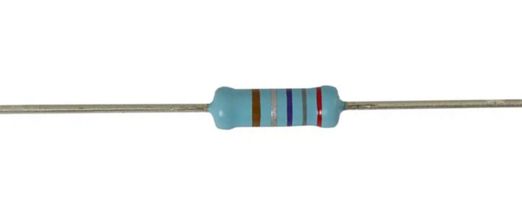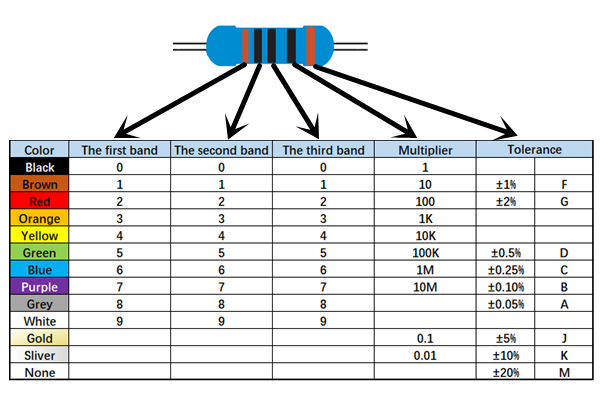Resistors with color bands are an essential tool for quickly determining their resistance value without the need for a multimeter. These color-coded markings are typically found on cylindrical resistors such as carbon film, metal film, metal oxide film, fuse, and wire-wound resistors. The number of color bands can vary, usually indicating either four, five, or six bands to represent the resistor’s value and other characteristics.

Color-coded resistors are among the most common components in electronic circuits. They use colored bands painted around the resistor body to indicate its resistance value. Common units include ohms (Ω), kilo-ohms (kΩ), and mega-ohms (MΩ). For reference, 1 MΩ equals 1,000 kΩ or 1,000,000 Ω.
Most color-coded resistors fall into two main categories: four-band and five-band types. The four-band version is more commonly used in general applications. In a four-band resistor, the first two bands represent significant digits, the third band indicates the multiplier, and the fourth band shows the tolerance. For five-band resistors, the first three bands are digits, the fourth is the multiplier, and the fifth represents the tolerance.
Tolerance is often indicated by specific colors: gold (5%), silver (10%), and brown (1%). If there's no band, it generally means a 20% tolerance, while green may occasionally be used for 0.5% tolerance.

How to Identify Four-Band Resistors
A four-band resistor uses four colored bands to represent its resistance value. Starting from the left, the first band is the first digit, the second is the second digit, the third is the multiplier, and the fourth is the tolerance. If you're unsure which band is first, look for the fourth band—it is usually gold or silver, as these colors are rarely used elsewhere.
Examples:
- Red, yellow, brown, gold: 24 × 10 = 240 Ω, tolerance of 5%
- Green, red, yellow, silver: 52 × 10,000 = 520 kΩ, tolerance of 10%
How to Identify Five-Band Resistors
A five-band resistor has five colored bands. The first three represent digits, the fourth is the multiplier, and the fifth is the tolerance. This type is often used for higher precision resistors.
Example: Red, red, black, black, brown: 220 × 1 = 220 Ω, tolerance of 1%
How to Identify Six-Band Resistors
Six-band resistors are less common but still used in specialized applications. The first five bands follow the same pattern as five-band resistors, with the sixth band indicating the temperature coefficient. These are typically found in high-precision or high-stability circuits.
Understanding how to read color bands on resistors is a fundamental skill for anyone working with electronics. It helps in selecting the right component for a circuit and ensures proper functionality and safety.
Suzhou Sikor Industry Co., Ltd. , https://www.sikor-group.com
![<?echo $_SERVER['SERVER_NAME'];?>](/template/twentyseventeen/skin/images/header.jpg)